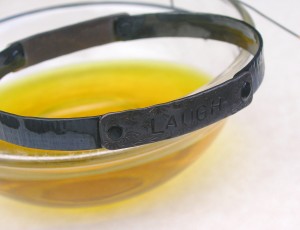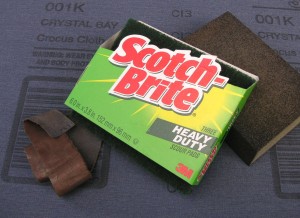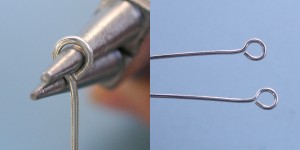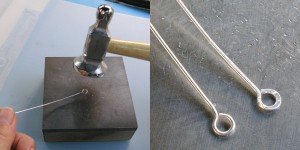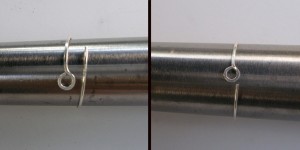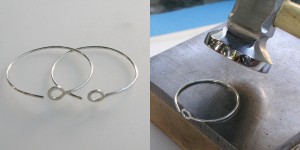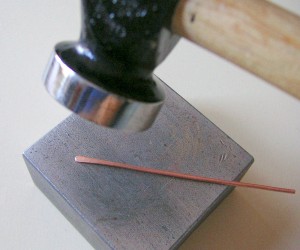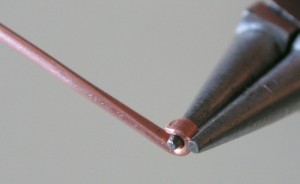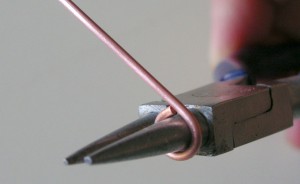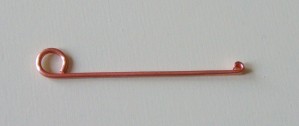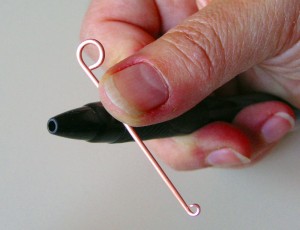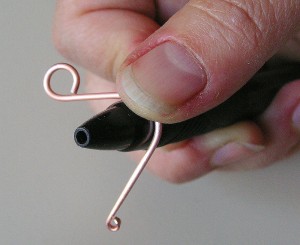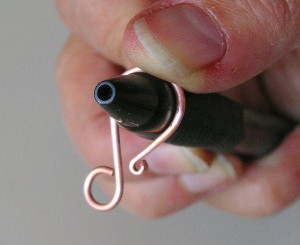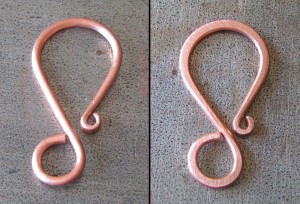I enjoy doing custom work – but I hate when I mess it up! A few months ago, I made a simple heart pendant with the name of a friends daughter stamped into the surface. I started in the middle to center the name, and worked outward, but unfortunately, I messed up the next to last letter by stamping it too far away, and not leaving me room for the last letter – so poor “MERCEDES” wound up “ERCEDES” on my first try!
I eventually created another one (which came out just fine!), and just threw this into my recycle pile. But I’d much rather reuse, than recycle, so in the back of my mind, I had the idea to rework it with a copper heart, but I wasn’t too sure what to do.
The first thing I realized is that I had to reshape the copper heart to be closer to the shape of the silver one. So I traced the heart, and did a bit of grinding and sanding to make the heart more rounded, like the silver shape.
You can see how I reshaped the bottom to make the sides a bit rounder, and I filed the separation at the top, to exaggerate the shape a little. Once I got the copper done, I needed to do something to the silver, and I decided to do a simple texture using a polished ball pien hammer, working on the back, Once the texture looked good, I laid it on the copper heart, to see how I wanted to proceed.
Not bad…! I really like how the copper base highlights the textured silver, and although I originally thought I’d drill some holes on each side and add jumprings, instead, I think I’ll make a bail in the center. I was also going to rivet the 2 hearts with some brass rod, but I like the solid look of the silver, so I’m going to just solder it up instead.
I did a simple sweat solder join between the 2 pieces by just soldering the back of the silver heart, then laying it over the copper heart, and reheating. Unfortunately, I was concerned that I wasn’t making contact across the whole disk, and I reheated it a bit too much – you can see how the solder flowed out the edges on the sides (sorry I didn’t take a photo before I antiqued it!). I also curved the hearts before soldering them together, so that I didn’t warp the top silver disc, and added a center bail. Then I did a little clean up, oxidized the pendant, and buffed it up with a satin finish.
When possible, I try to keep the back clean and in the same style as the front – this shows the curve, the patina, and the clean solder of the bail. I only wish the silver heart was as cleanly soldered onto the copper as the bail!
Well… this is not sell quality, but I love the look. So I’m not sure if it’s mine (feels a little strange giving myself a heart!), or if I’ll gift it to a friend. And lucky for me, I’ve got another mis-stamped silver heart in my recycle bin, so I can make another one, which I hope will come out a bit better!!











